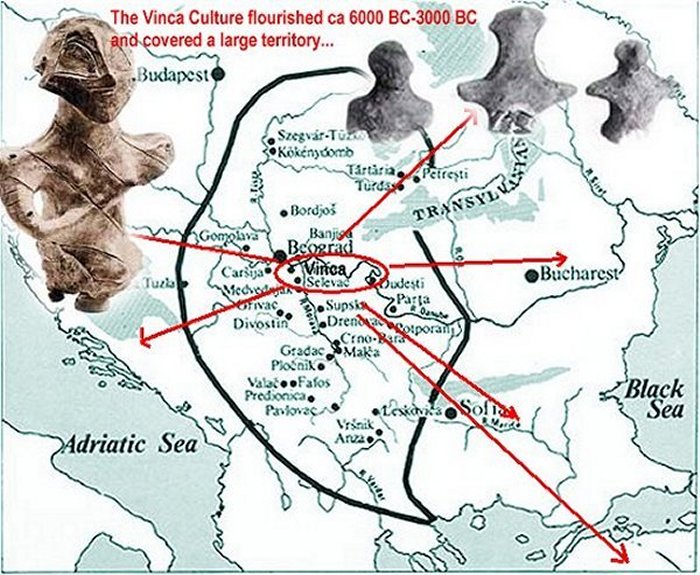Mysterious Vinca Culture Is Among The Most Advanced Prehistoric Societies In Europe
A. Sutherland - AncientPages.com - There was once a mysterious European culture, which left a legacy in the form of valuable artifacts covered with an unknown, never successfully deciphered script. These artifacts have been excavated from sites in south-east Europe.
The culture that flourished from about 6000 BC to 3000 BC, was named Vinca-Tordos Culture of Yugoslavia and western Romania and derived its name from the village of Vinca located on the banks of the Danube river, only 14 km downstream from Belgrade.
A century ago, a great discovery was made at the Danube riverbank. Panta, an old man from Vinča accidentally found a strange clay figurine: This mysterious figurine was puzzling to him so he took it to the National Museum in Belgrade in order to find the explanation. The figurine was soon recognized as an artifact that dated back to the late Stone Age.
Since then, a number of archaeological excavations have revealed numerous cultural layers of a civilization and its largest Neolithic settlement in Europe, dating back more than 7,000 years BC.
The Vinca legacy includes among others, curious masks and the most informative costumed figurines depicting women in extremely modern clothes like narrow skirts, and sleeveless upper-body panels, complimented with hip belts, aprons, jewelry, shoes, caps, hairstyles, bracelets, necklaces, and medallions.
 Prediconica mask, Vinca culture 4500 BC-4000 BC
Prediconica mask, Vinca culture 4500 BC-4000 BC
There have also been unearthed different kinds of tools and weapons and the remains of prehistoric houses with the furniture and many other objects created in the Vinca region or brought from remote areas.
Since the language of the Vinca still remains undeciphered, unearthed artifacts constitute the only source of knowledge about this culture. Vinca's living style reminds us of our own. They lived in houses that had very complex architectural layouts and several rooms.
The houses faced northeast-southwest and were separated by streets. Vinca people had stoves in their houses, preceding the Romans in using these devices. They used special holes only for rubbish, and had the same tradition as we have, to bury people in cemeteries.
The development of copper metallurgy is evident during the latter part of the Vinca culture's evolution.
Among unearthed artifacts, there have been found a large number of figurines made of clay and other artifacts depicting worshipped deities and women in miniskirts, short tops, wearing jewelry.
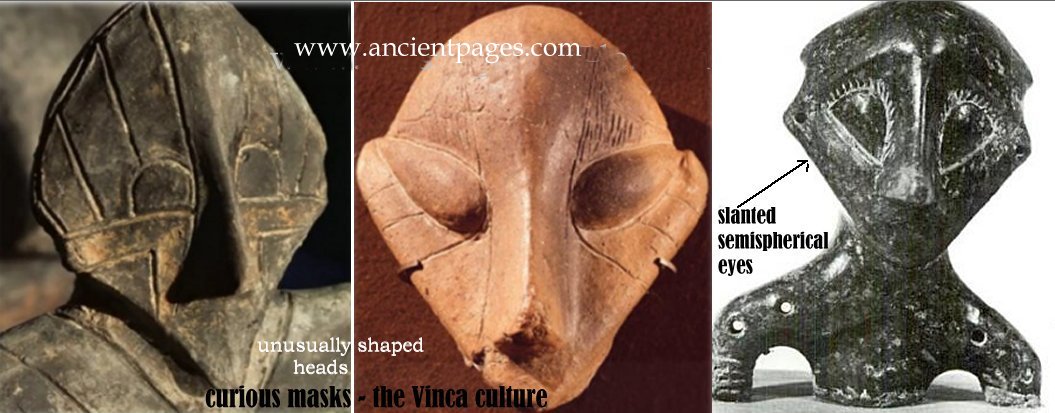
It is hard to believe that women that lived several millennia ago wore miniskirts, unless, the cult of Mother Goddess was very widespread and reached both the south-east parts of Europe and ancient India.
Similar, made of ceramic clay, figurines of Mother Goddess, were found in excavations in Mohenjo-Daro, located along the Indus River in ancient India (present-day Pakistan).
Was this kind of clothes popular 7,500 years ago?
The Vinca Culture - Europe's biggest prehistoric civilization - point to a metropolis with a great degree of sophistication and a taste for art and fashion.
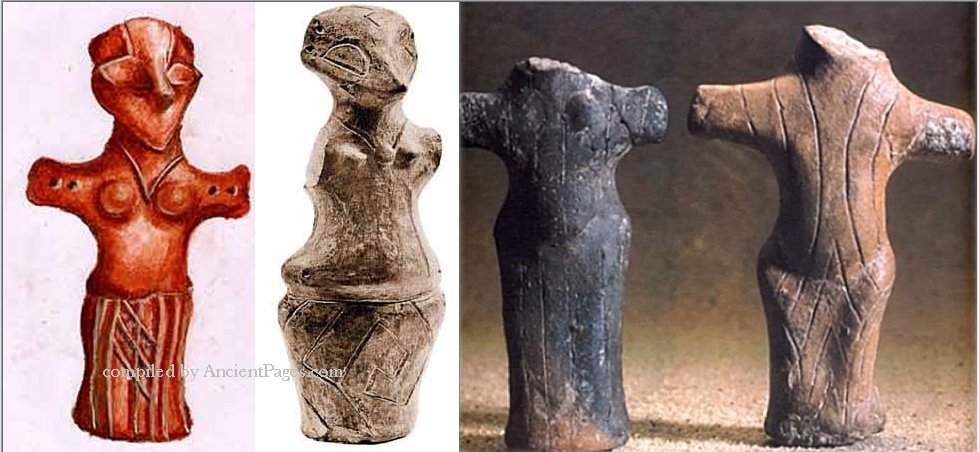
Numerous figurines related to the Vinca Culture bear 'markings that clearly indicate clothing, bequeathing a wealth of costume detail. The Vinca culture in the Danube River basin, from the end of the sixth through the fifth millennia B.C., left the most informative costumed figurines.
These images bear deep incisions encrusted with white paste or red ocher emulating fringe, hip belts, aprons, narrow skirts, and sleeveless upper-body panels. The Vinca artisans sans also modeled a variety of shoes, caps, hairstyles, bracelets, necklaces, and medallions...
Figurines with clothing and ornaments appear either bare-breasted or fully clad. Several dress combinations recur persistently on bare-breasted images. Some wear only a hip belt or a hip belt supporting either an apron or an entire fringed skirt. Others wear a tight skirt and nothing else...' 1
An important question is: Is the legacy of the Vinca culture evidence of the ever known earliest manifestation of the Divine Power and well-evolved and widespread Mother Goddess worship cult?
Many terracotta figurines of the Mother Goddess were recovered in excavations at various archaeological sites of Indus Valley. Naturally, orthodox science proposes a classical explanation to this phenomenon and say that the proto Mother, the symbol of female fertility, is depicted on prehistoric figurines.

On many of the artifacts excavated from sites in south-east Europe, there have been found the Vinca symbols. Here are common symbols used throughout the Vinca period:
They probably represent the earliest form of writing ever found and predating ancient Egyptian and Sumerian writing by thousands of years.
Since the inscriptions are all short and appear on objects found in burial sites, and the language represented is not known, it is highly unlikely they will ever be deciphered.
In some way, Vinca's past is both forgotten and lost.
The first version of this article was originally published on October 25, 2014
Written by – A. Sutherland AncientPages.com Staff Writer
Copyright © AncientPages.com All rights reserved. This material may not be published, broadcast, rewritten or redistributed in whole or part without the express written permission of AncientPages.com
Expand for referencesReferences:
- M. Gimbutas, Living Goddesses
More From Ancient Pages
-
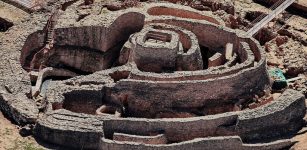 Motilla del Azuer: Impressive And Unusual 3,200-Year-Old Fortress
Featured Stories | Nov 13, 2018
Motilla del Azuer: Impressive And Unusual 3,200-Year-Old Fortress
Featured Stories | Nov 13, 2018 -
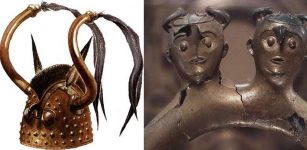 Mysterious Bronze Age Viksö Helmets With Horns Related To Myths, Holy Animals And Divine Power
Artifacts | Feb 27, 2018
Mysterious Bronze Age Viksö Helmets With Horns Related To Myths, Holy Animals And Divine Power
Artifacts | Feb 27, 2018 -
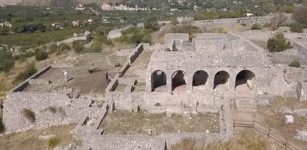 Was Beautiful Ancient City Of Terracina Home To The First Hellenistic Temple?
Archaeology | Dec 16, 2019
Was Beautiful Ancient City Of Terracina Home To The First Hellenistic Temple?
Archaeology | Dec 16, 2019 -
 Trentren And Caicai: The Battling Serpents Of Chilote Mythology
Featured Stories | Jul 10, 2022
Trentren And Caicai: The Battling Serpents Of Chilote Mythology
Featured Stories | Jul 10, 2022 -
 Puzzling Construction Of Unique Sunken Ship From The 17th Century Examined
Archaeology | Jul 28, 2022
Puzzling Construction Of Unique Sunken Ship From The 17th Century Examined
Archaeology | Jul 28, 2022 -
 What Was It Like To Be A Student In The Middle Ages?
Ancient History Facts | Jun 6, 2019
What Was It Like To Be A Student In The Middle Ages?
Ancient History Facts | Jun 6, 2019 -
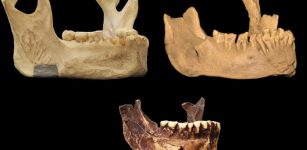 Mysterious Jawbone May Represent Earliest Presence Of Humans In Europe
Archaeology | Dec 7, 2022
Mysterious Jawbone May Represent Earliest Presence Of Humans In Europe
Archaeology | Dec 7, 2022 -
 Ancient DNA Reveals Mongolia’s First Nomadic Empire Was Multiethnic
DNA | Apr 14, 2023
Ancient DNA Reveals Mongolia’s First Nomadic Empire Was Multiethnic
DNA | Apr 14, 2023 -
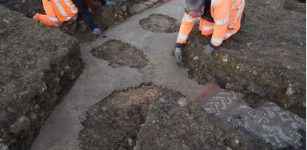 Stunning Colorful Ancient Roman Mosaic With Found Under Aldi Supermarket Site In UK
Archaeology | Mar 20, 2023
Stunning Colorful Ancient Roman Mosaic With Found Under Aldi Supermarket Site In UK
Archaeology | Mar 20, 2023 -
 Andvaranaut: Magical Ring That Made Gold And Was Stolen By Norse God Loki
Featured Stories | Apr 12, 2017
Andvaranaut: Magical Ring That Made Gold And Was Stolen By Norse God Loki
Featured Stories | Apr 12, 2017 -
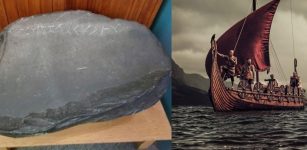 Does Yarmouth Runic Stone Describe A Trans-Atlantic Viking Voyage?
Artifacts | Oct 22, 2018
Does Yarmouth Runic Stone Describe A Trans-Atlantic Viking Voyage?
Artifacts | Oct 22, 2018 -
 On This Day In History: Leon Trotsky Was Assassinated – On August 20, 1940
News | Aug 20, 2016
On This Day In History: Leon Trotsky Was Assassinated – On August 20, 1940
News | Aug 20, 2016 -
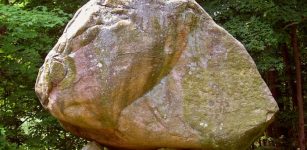 Mystery Of The Giant Boulder In North Salem
Featured Stories | Aug 8, 2019
Mystery Of The Giant Boulder In North Salem
Featured Stories | Aug 8, 2019 -
 Biblical City In Zanoah Offers Archaeological Evidence Of Moses’ Journey To The Promised Land
Archaeology | Jul 18, 2024
Biblical City In Zanoah Offers Archaeological Evidence Of Moses’ Journey To The Promised Land
Archaeology | Jul 18, 2024 -
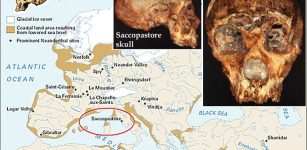 Neanderthals Were Present In Italy Much Earlier Than Previously Thought
Archaeology | Nov 6, 2015
Neanderthals Were Present In Italy Much Earlier Than Previously Thought
Archaeology | Nov 6, 2015 -
 How Large Was The ‘Giant’ Dunkleosteus Terrelli – Prehistoric King Of The Oceans?
News | Apr 10, 2023
How Large Was The ‘Giant’ Dunkleosteus Terrelli – Prehistoric King Of The Oceans?
News | Apr 10, 2023 -
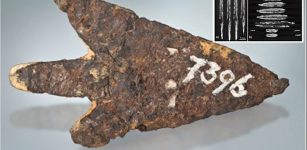 Arrowhead Made Of Meteoritic Iron From The Late Bronze Age Settlement Of Mörigen, Switzerland – Examined
Archaeology | Aug 1, 2023
Arrowhead Made Of Meteoritic Iron From The Late Bronze Age Settlement Of Mörigen, Switzerland – Examined
Archaeology | Aug 1, 2023 -
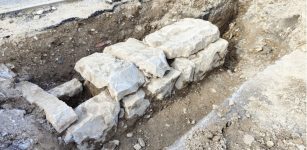 Mysterious Ancient Stone Structure Discovered In Torreano, Italy
Archaeology | Mar 29, 2023
Mysterious Ancient Stone Structure Discovered In Torreano, Italy
Archaeology | Mar 29, 2023 -
 Mysterious Underground City In Brazil Could Re-Write Ancient History – Riddle Of The 12 Men – Part 2
Ancient Mysteries | Jan 26, 2022
Mysterious Underground City In Brazil Could Re-Write Ancient History – Riddle Of The 12 Men – Part 2
Ancient Mysteries | Jan 26, 2022 -
 Amazing Restoration Of Ancient Roman Vineyard Buried Underneath The Ash Of Mount Vesuvius For 2,000 Years
Archaeology | Nov 27, 2020
Amazing Restoration Of Ancient Roman Vineyard Buried Underneath The Ash Of Mount Vesuvius For 2,000 Years
Archaeology | Nov 27, 2020

